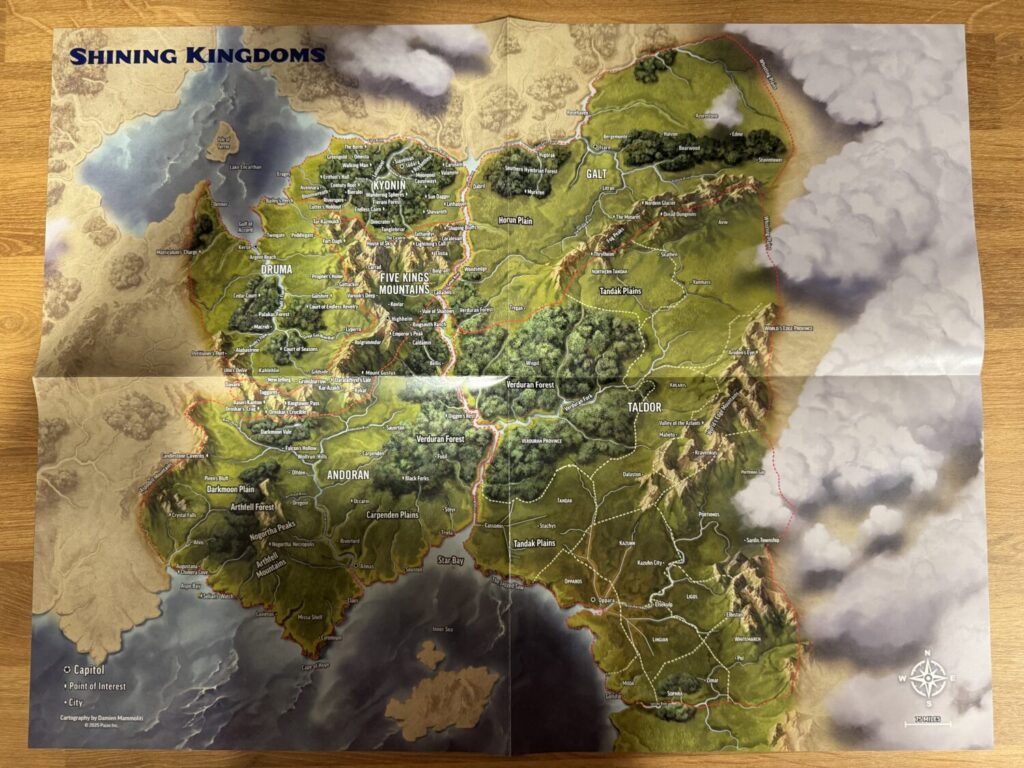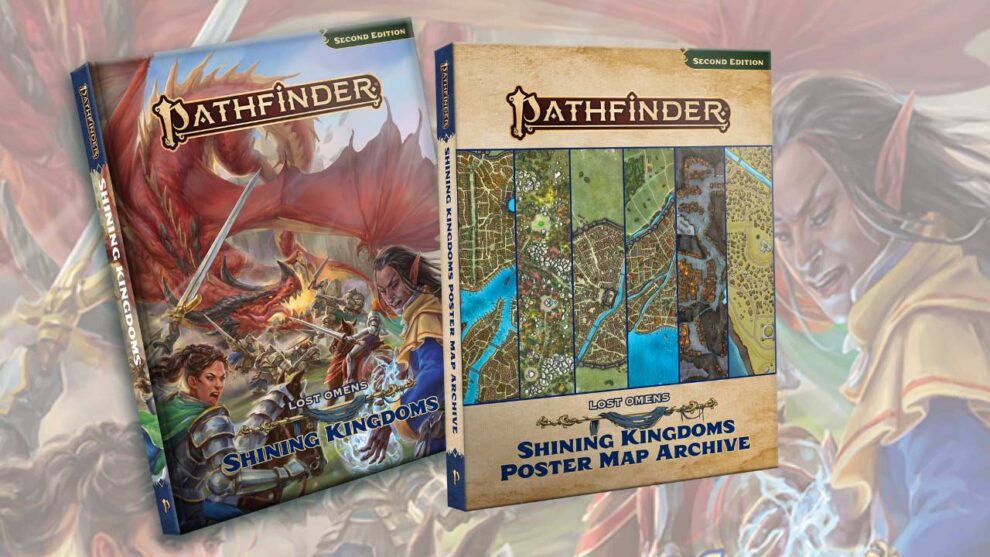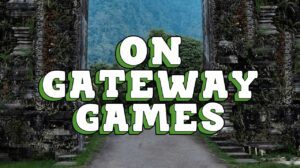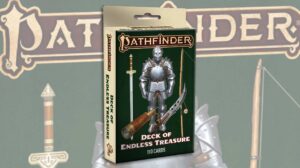Disclosure: Meeple Mountain received a free copy of this product in exchange for an honest, unbiased review. This review is not intended to be an endorsement.
When throwing around the term ‘high fantasy’, the first things that spring to mind for me are works of fiction like Game of Thrones and The Lord of the Rings. Literature laced with political intrigue, knights on horseback, and a world wreathed in magic. The world of Pathfinder Second Edition, Golarion, puts the tropes and themes of high fantasy literature on full display. From the broken land of rebellion, Galt, to the revered dwarves in the Five Kings Mountains, there are plenty of plots sure to satiate any hungry Gamemaster. Is this lore-driven book destined for your shelf? Let’s take a look.
Pathfinder Lost Omens: Shining Kingdoms Overview
The Shining Kingdoms region encompasses six nations, each rich with their own cultures and storied history: Andoran, Druma, the Five Kings Mountains, Galt, Kyonin, and Taldor. For those familiar with Golarion, Pathfinder Lost Omens: Shining Kingdoms offers a refresher of where things stand after the events of the Tyrant’s Grasp Adventure Path. I don’t need a spoiler tag to tell you that the region has changed drastically over the course of a decade of Adventure Path releases.
Pathfinder Lost Omens: Shining Kingdoms opens with a brief 20-page introduction outlining the history, beliefs, and factions of the Shining Kingdoms region, before diving into the detailed sections for each of the six nations. These sections speak at length to each nation’s history, government, current events, notable figures, and prominent locations before zeroing in on their capital city within to provide more granular detail. Each section rounds out the content by providing character options which come in the form of feats, spells, items, and more.
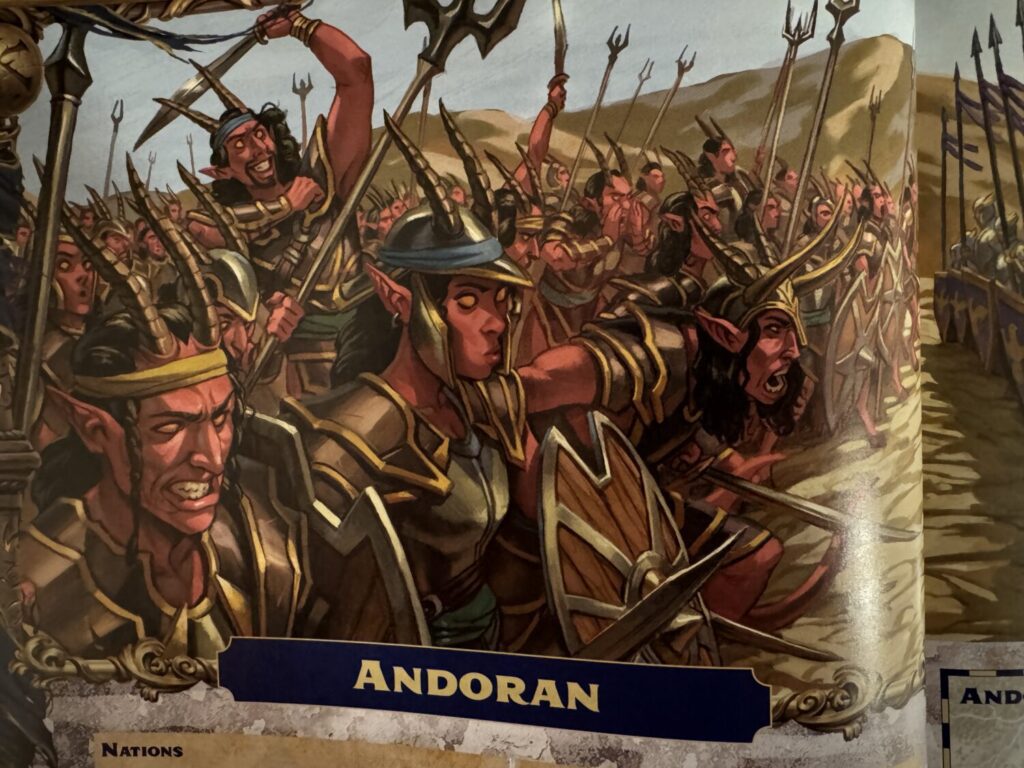
I’ve always been a firm believer that a map can tell you a lot about a particular city and culture based on its structures, proximity to landmarks, and building density. Even though each nation gets two maps—one for the nation and another for their capital city—they provide invaluable insights into ways that a Gamemaster can approach and detail those areas. Every numbered map location in the key is accompanied by several paragraphs providing context as to why it’s worth pointing out. For example, the map of Isarn—Galt’s capital—shows the major roads all leading inward to the city center where the Hall of Justice looms over the Revolutionary Plaza. This detail places emphasis on the tumultuous past with the Grey Gardeners rounded up dissenters and subjecting them to the magical guillotines known as the final blades in a public spectacle. Maps tell plenty of stories on their own, but I appreciate the additional explanations provided in the book.
At its core, Pathfinder Lost Omens: Shining Kingdoms is designed for Gamemasters who are preparing for a party to adventure in the Shining Kingdom region. Whether it’s a campaign centered around the intertwined balance of nature and civilization in Kyonin, or a foray into the wealth-driven society of Druma, the Shining Kingdoms largely portray regions whose analogs would have roots in ancient Greece and Rome. This includes revolutionary France (Galt), the Byzantine Empire (Taldor), Switzerland (Druma), and the early United States (Andoran). The other two regions are more Tolkein-inspired in the Five Kings Mountains (Dwarves) and Kyonin (Elves).
I’d also like to give a shoutout to Galt, which has always been my favorite thematic nation in Golarion. Back in high school, our European History course spent a solid chunk of time on Revolutionary France including Robespierre and the Reign of Terror. It was a terrifying time, and when you add in fantasy elements like an influx of ghosts due to the use of the final blades, you have a really interesting setting for a Gothic horror campaign. It seems like there haven’t been many Galt-centric published adventures outside of some Pathfinder Society scenarios, but if you’re also interested in Galt I highly recommend The Night of the Gray Death, an adventure published by Ron Lundeen.
I primarily view Pathfinder Lost Omens: Shining Kingdoms as a reference book, as it’s probably not one that would typically be read cover-to-cover. Brushing up on the regions as they become relevant to your campaign or—if you’re a player—your character is the main use case for picking up this sourcebook. Although it is also nice to see a fold-out map of the region stuck to the inside back cover, it’s important to remember that as a part of the Lost Omens line, this book’s focus is not on mechanical options for your games. Its focus is backstory, lore, and history.
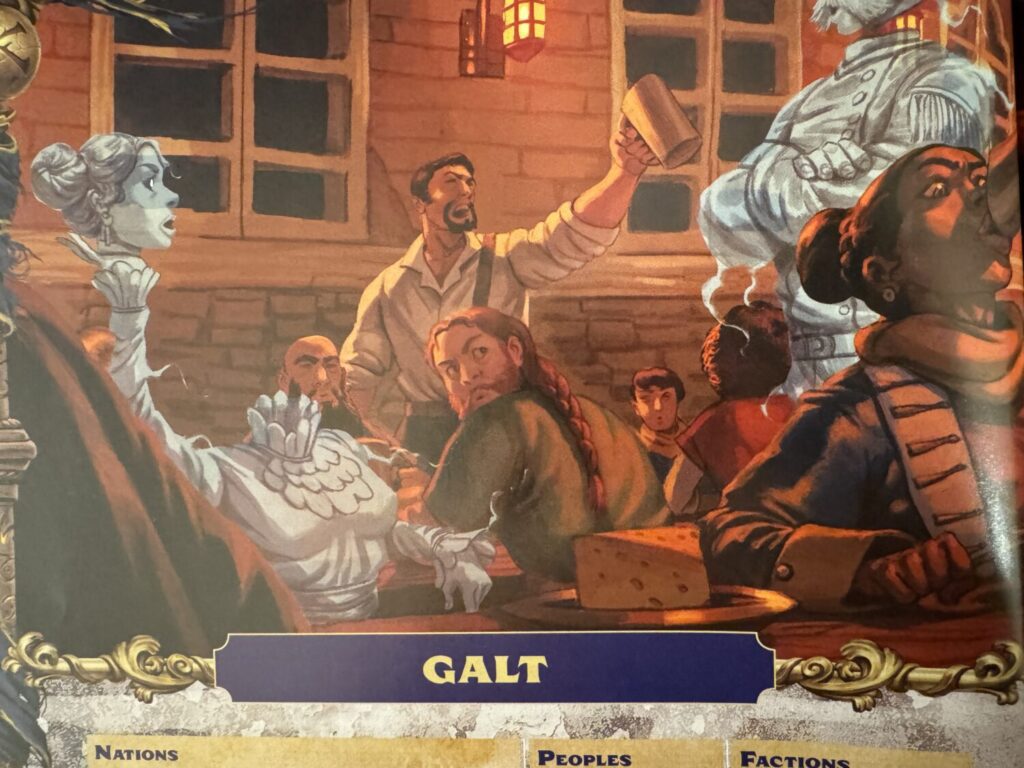
Pathfinder Lost Omens: Shining Kingdoms Poster Map Archive
In addition to the main sourcebook, Paizo also offers a Shining Kingdoms Poster Map Archive for anybody who spends a lot of time adventuring in the Shining Kingdoms region. This doesn’t contain any content that isn’t already in the Pathfinder Lost Omens: Shining Kingdoms book; it contains seven 22″x17″ fold-out maps; one for each nation and one featuring the Shining Kingdoms region with and without labeled landmarks.
One side features a region, like the Five Kings Mountains, with the back showing the map for the capital city. Its usefulness is sort of relegated to being either a display piece on the wall—eliminating half of its functionality—or I could really see it being used as a party tracking device if a group is spending a prolonged period of time in the respective capital cities.
What I can appreciate, however, is that the maps come in a box. This seems like a minor celebration but I absolutely loathe when map resources come rolled up in a tube, which makes storage a nightmare. These maps are stored neatly in their book-sized box, ready for further use. I don’t mind a few fold lines in my maps if it means I don’t have to deal with wrecked edges from squashing them into a tube.
Pathfinder Lost Omens: Shining Kingdoms is about as high fantasy as you can get without introducing the steampunk and futuristic aspects of areas like Alkenstar, and it plays the part very well. If you’re looking for character options, you won’t find them here, but you also shouldn’t be looking to the Lost Omens sourcebooks to begin with. Gamemasters, however, rejoice. There are enough dragons, elves, and dwarves in these pages to keep you satisfied for a long, long time.
